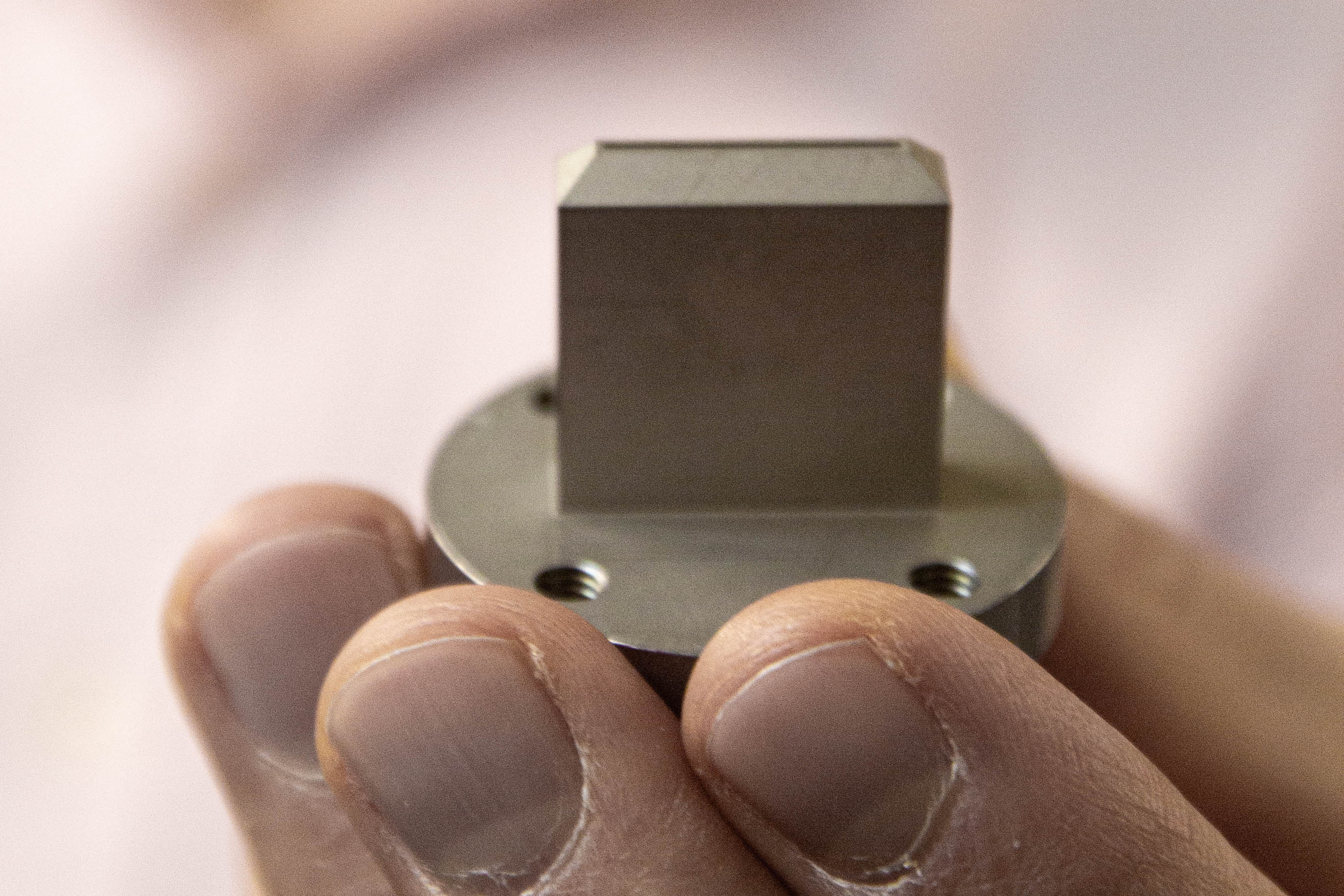Multi-GeV Electron Acceleration
With an maximum energy after compression of about 65 J, pulses from the ATLAS-3000 laser are expected to accelerate electron beams to energies of multiple GeV.
Using Laser Wakefield Acceleration (LWFA), electron energies of the order of few hundred MeV are nowadays commonly reached [1]. Reaching multi-GeV energies on the other hand still holds many challenges, even though it has been previously accomplished [2]. Here the careful design of gas targets is essential, since acceleration needs to be sustained over not just a few millimeters but several centimetres. At these length scales it becomes increasingly difficult to guide the laser pulse and to maintain a homogeneous plasma density profile.
For this, different gas targets are of interest. On the one hand, supersonic gas jets from convergent-divergent nozzles can be used. These provide sharp density gradients at the edges and a plateau-shaped density profile. The supersonic properties of the gas flow can be utilized for creating an obstacle-induced shock in the gas density for so-called shock injection of electrons into the laser wakefield [3], which can accelerate quasi-monoenergetic electron bunches.
To be able to scale up the length of these nozzles for longer acceleration lengths while minimizing the gas flow into the LWFA vacuum chamber, slit nozzles with a long extend in the laser direction and a small extend in the transverse direction are designed. These nozzles are simulated using Computational Fluid Dynamics (CFD) and fabricated for the use in LWFA experiments. A picture of such a fabricated nozzle in shown in Fig.1.

Fig.1: Photograph of a 15-mm-long slit nozzle for GeV electron acceleration.
Furthermore, gas cells can be used as targets for LWFA that are more easily scaled up to longer lengths for the acceleration to GeV energies. Here, different injection mechanisms are used, for example ionization injection that can be confined to a specific part of the gas cell for a specific injection point to accelerate quasi-monoenergetic electron bunches.
In either gas jets and gas cells, different guiding mechanisms can help guide the laser over several diffraction lengths to maximize the acceleration length: Highly intense lasers can be self-guided due to self-focusing or external guiding structures can be generated, for example by hydrodynamic optical-field-ionized (HOFI) plasma channels created by a channel forming beam that is focused using an axicon lens [4].
- S. Karsch et al. “GeV-scale electron acceleration in a gas-filled capillary discharge waveguide”. In: New Journal of Physics 9.11 (Nov. 2007), pp. 415–415.issn: 1367-2630
- J. Gonsalves et al. “Petawatt Laser Guiding and Electron Beam Acceleration to 8 GeV in a Laser-Heated Capillary Dis-charge Waveguide”. In: Physical Review Letters 122.8 (Feb.2019). issn: 1079-7114
- A. Buck et al. "Shock-Front Injector for High-Quality Laser-Plasma Acceleration", Phys. Rev. Lett. 110, 185006 (2013)
- R. J. Shalloo et al. “Low-density hydrodynamic optical-field-ionized plasma channels generated with an axicon lens”. In: Physical Review Accelerators and Beams 22.4 (Feb. 2019). issn: 24699888
Research coordinator:
PhD student:

